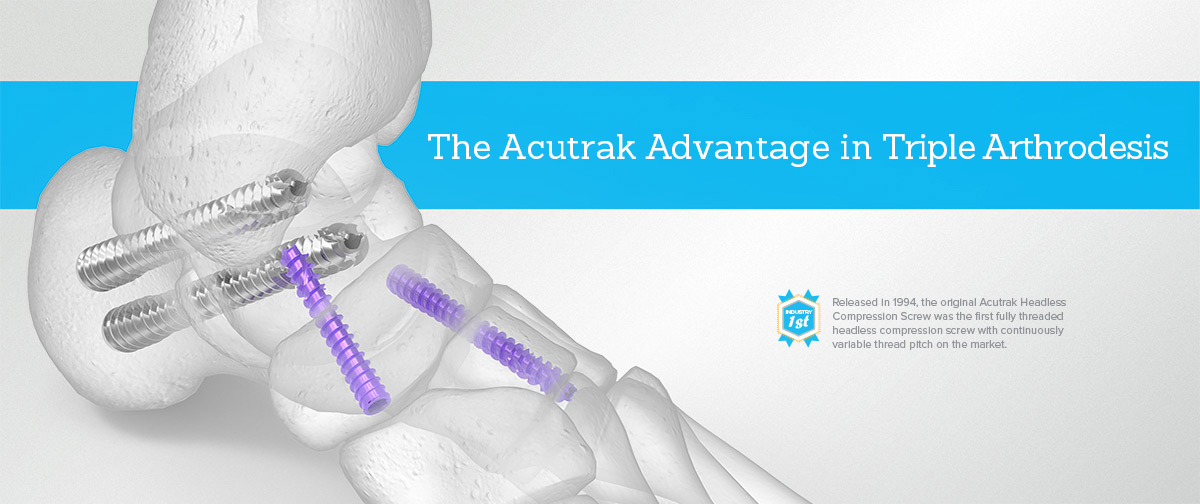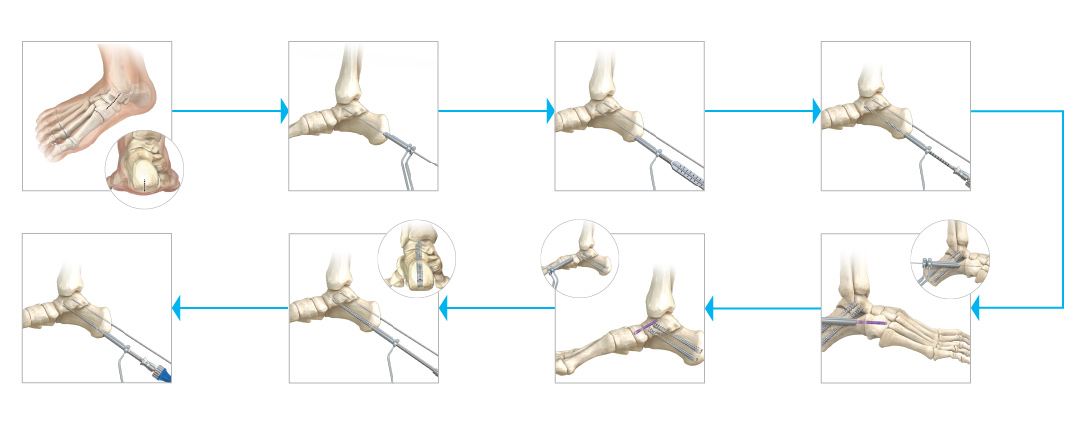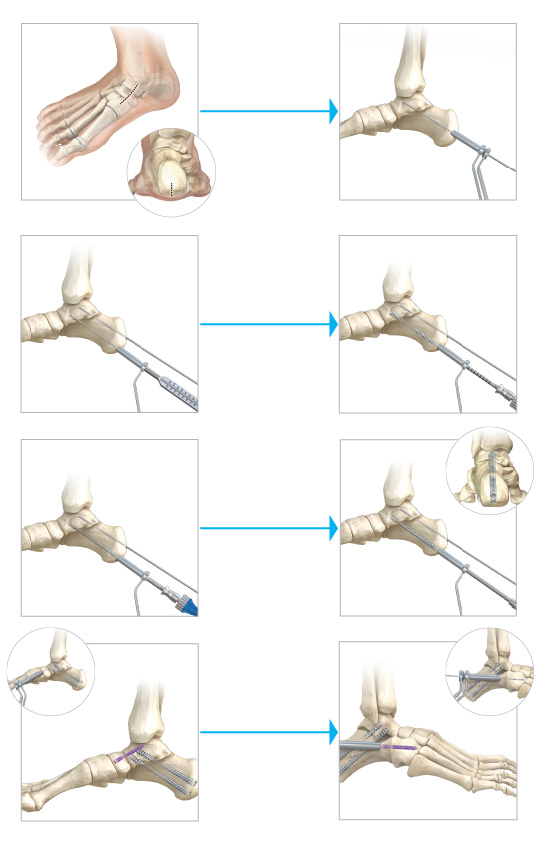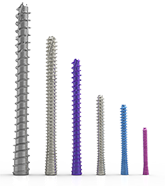When severe arthritis, instability, or deformity cannot be controlled with a nonsurgical approach, a surgeon may choose to fuse one or all of the three joints in the back of the foot (the talonavicular, subtalar, and calcaneocuboid). Acutrak screw technology may be advantageous for these fusions because a headless compression screw is designed to minimize soft tissue irritation.
Compression: Gained and Retained
Maintains the highest amount of retained compression after cyclic loading compared to AO and Herbert screws in cadaveric and synthetic bone material1
Acutrak technology has a wider window of compression, which is less sensitive to stripping the bone and more flexible in its placement for reaching a maximum amount of compression.
Better Resistance to Rotation
A biomechanical study regarding subtalar fusion found that using two Acutrak 2—7.5 mm screws offered better resistance to rotation in subtalar fusions than two conventional lag screws2

Higher Torsional Stiffness
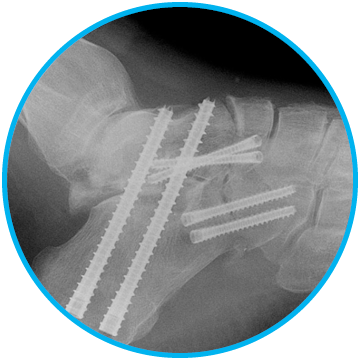
The two Acutrak 2—7.5 mm screws showed higher torsional stiffness in a biomechanical test compared to that previously reported with two conventional lag screws2
Videos
Acutrak 2 Headless Compression Screw System Overview
Surgical Technique Overview
Explore the Supplemental Use Guide
Acutrak 2 Headless Compression Screw System – 4.7 mm & 7.5 mm
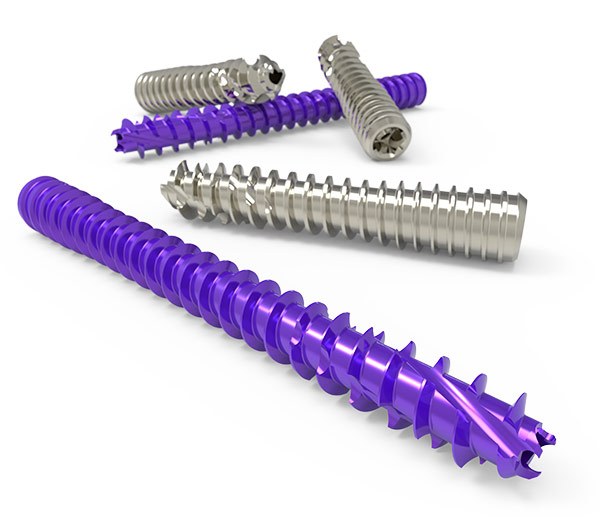
The Acumed Acutrak 2 - 4.7 and 7.5 are part of the latest evolution in fully-threaded headless screw fixation. With instrumentation designed to simplify the surgical technique, the Acutrak 2 screws are composed of unique size options to fit a wide variety of applications throughout the body. Besides Triple Arthrodesis fractures, this includes:
Acumed - Who We Are
We are a company on a mission to “aid the afflicted through the ingenuity of our minds, the labor of our hands, and the compassion of our hearts.” We support surgeons and health care providers who treat patients in their times of need.
1. Wheeler DL, McLoughlin SW. Biomechanical assessment of compression screws. Clin Orthop Relat Res.1998;350:237–245
2. Riedl M, Glisson RR, Matsumoto T, Hofstaetter SG, Easley ME. Torsional stiffness after subtalar arthrodesis using second generation headless compression screws: Biomechanical comparison of 2-screw and 3-screw fixation. Clin Biomech. 2017;45:32–37.

